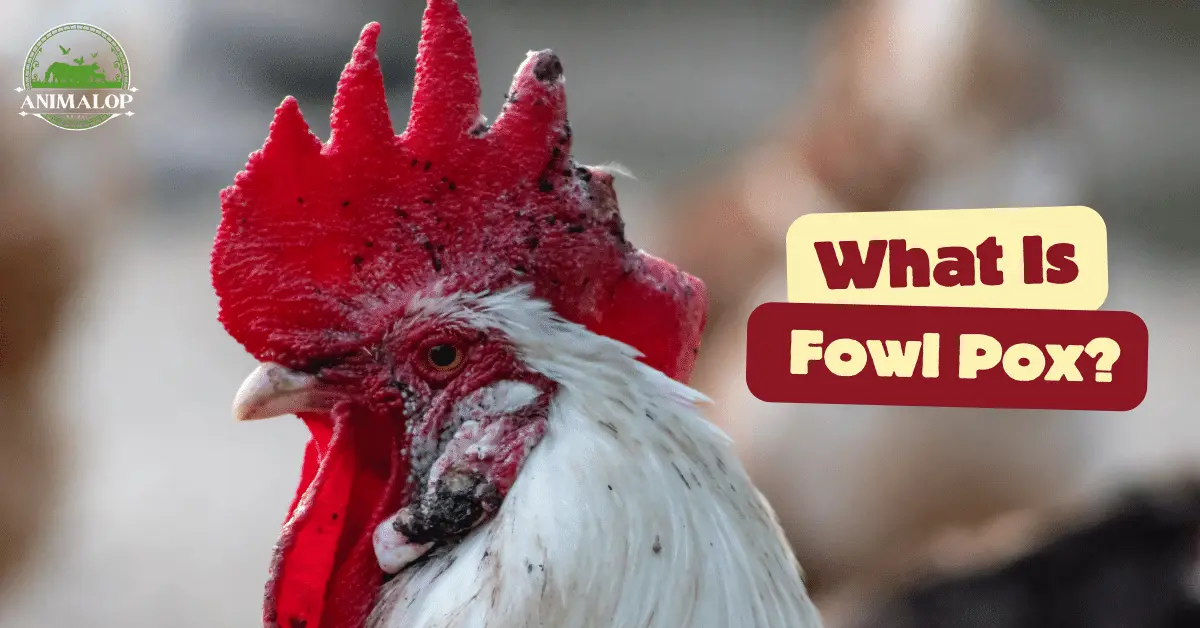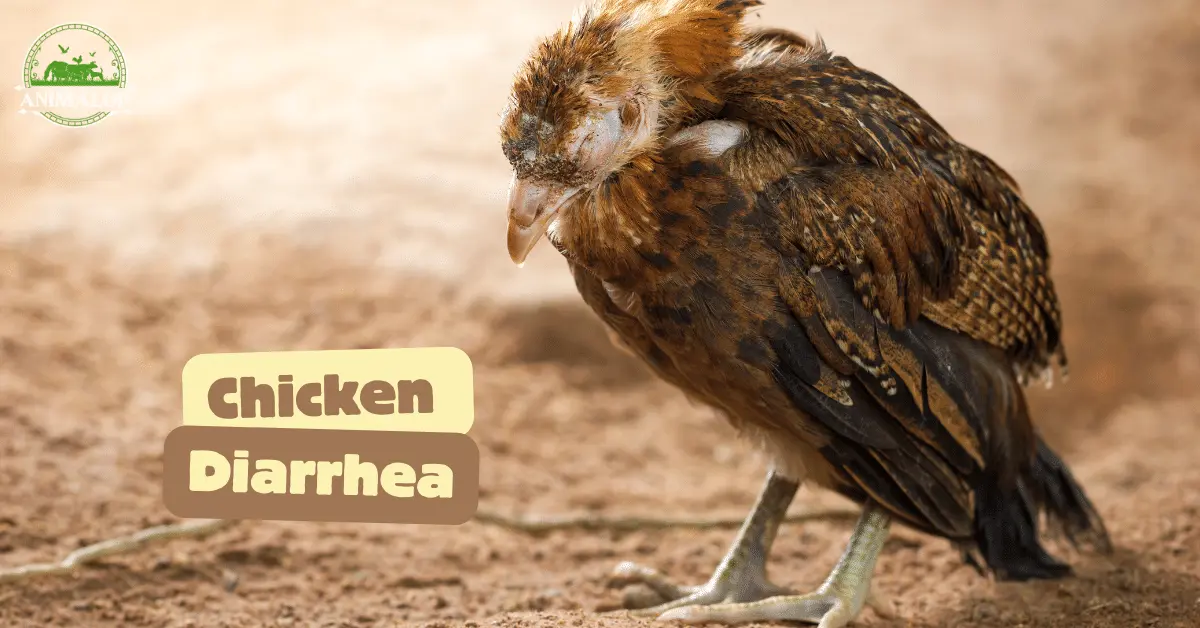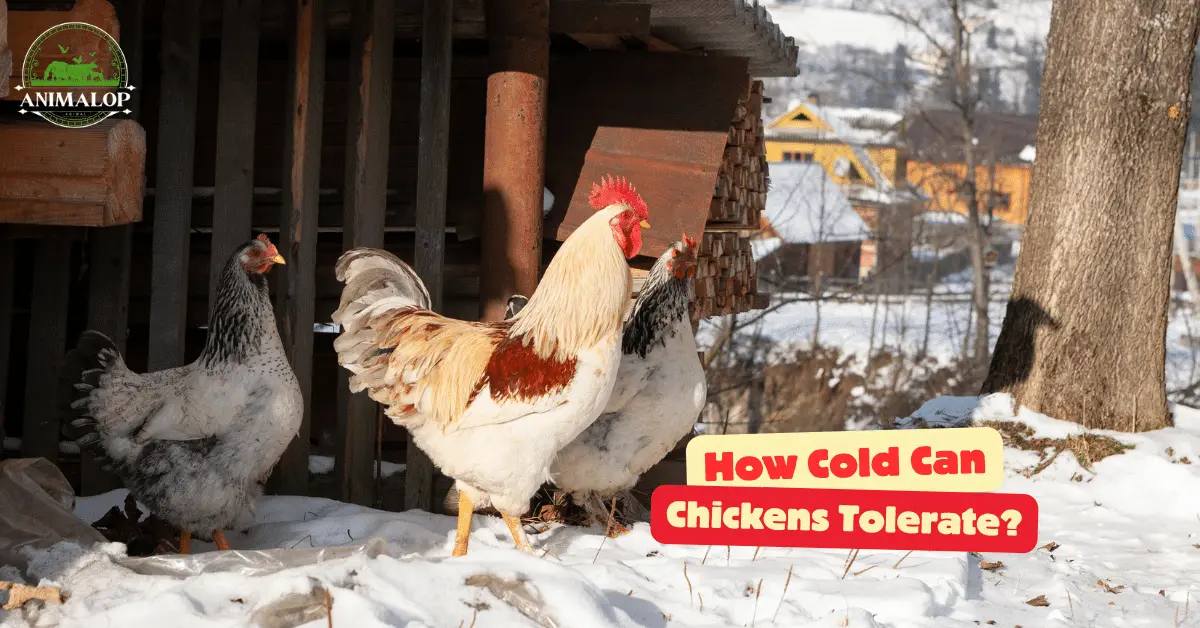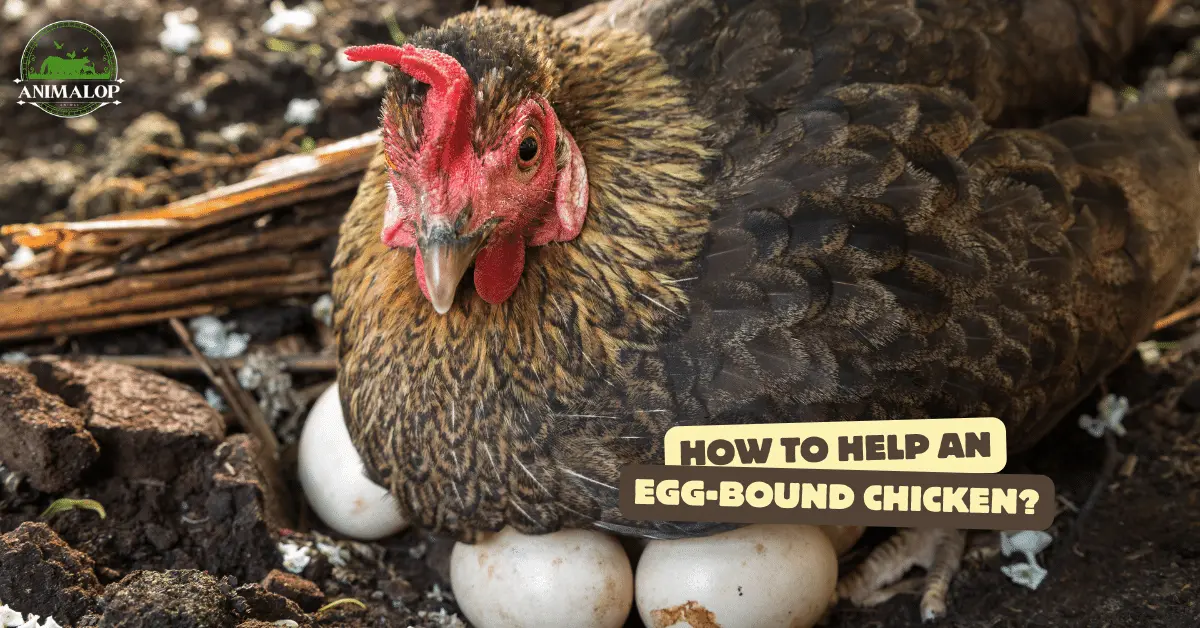Have you ever noticed unusual bumps or sores on your chickens? Could these be signs of a common disease affecting them?
Fowlpox, also known as Avian pox, is a virus that spreads slowly among chickens. It creates bumpy growths or scabs mostly on the chicken’s head, like on the comb, eyelids, and wattle, which is called dry pox.
There’s also a form called wet pox, or fowl diphtheria, where yellowish sores appear inside the mouth and at the top part of the throat and windpipe. Let’s discuss in detail!
What Is Fowl Pox?
Fowl pox is a disease that spreads slowly in chickens and shows up as sores on parts of the skin without feathers and/or inside the mouth, throat, or windpipe.
It’s caused by a virus called avian poxvirus, which comes in at least three different kinds: one that affects chickens and turkeys, another that infects pigeons, and a third that hits different kinds of wild birds.
Each kind of virus only makes the specific birds it can affect sick. For instance, the virus that makes pigeons sick won’t affect chickens the other way around.
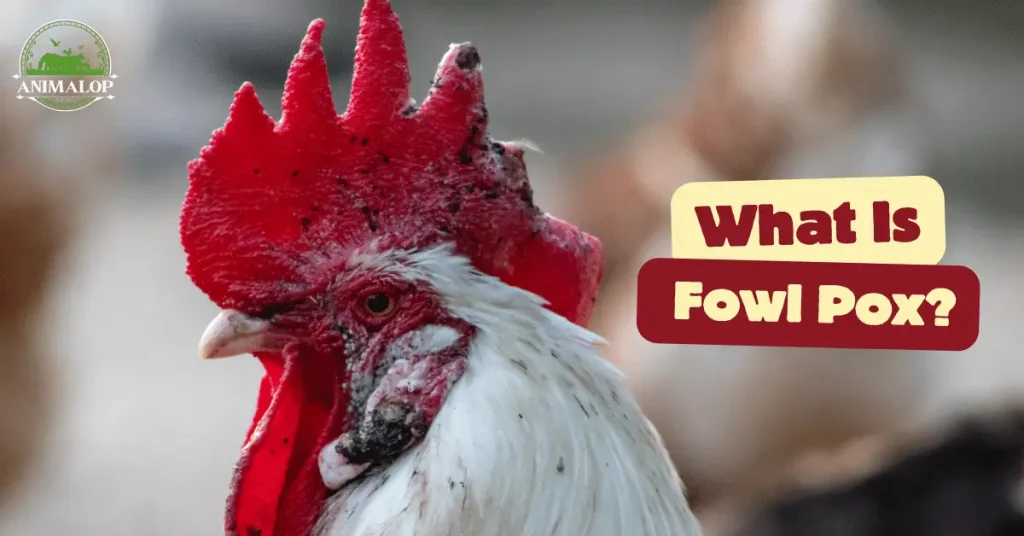
| Causes | Symptoms | Prevention |
|---|---|---|
| Mosquito bites | Dry Form: | Quarantine new chickens |
| Direct contact | Wart-like bumps on the skin | Use netting against mosquitoes |
| Contaminated scabs | Wet Form: | Vaccinate chickens |
| Yellowish spots in mouth/throat | Eliminate standing water | |
| Difficulty eating/swallowing | Add iodine to drinking water |
Forms of Fowl Pox
Fowl pox in chickens can show up in two ways: a dry form that affects the skin and a wet form that affects the inside of the mouth and throat.
Cutaneous or “dry” pox form
The most common type of fowl pox is the “dry” form. This looks like small, wart-like bumps on the skin where there are no feathers (like the face, comb, wattles, eyelids, legs, and feet). At first, these bumps start small and yellow and then get bigger.
As they grow, they change color to dark brown and become rough, dry scabs. These scabs usually stick around for 2 to 4 weeks before they fall off by themselves, leaving behind smooth skin.
The scabs are full of the virus and can easily spread the disease to other chickens. If these bumps show up near a chicken’s eyes, they might start with a little redness and irritation before the eyelid swells up and sores form on its edge.
The eyelids can even get stuck shut with a cheesy discharge or dry scabs, but these usually drop off in two weeks. Chickens with these sores are more likely to get other infections too.
Diphtheritic (wet pox) form
The “wet” form of fowl pox is more serious and can lead to more deaths in birds. It creates yellowish, cheesy-looking spots inside the bird’s mouth and throat. These spots start as small white bumps that join together into larger, raised yellow-white patches.
If these patches are in the parts of the throat used for breathing and eating, chickens might eat less and have trouble swallowing. Depending on how bad it gets, they might also show signs of breathing difficulties, from mild to very serious.
How Fowl Pox is Transmitted
Fowl pox spreads among chickens mainly through mosquito bites and when a new chicken, already carrying the virus without showing symptoms, joins the flock.
After a mosquito bites an infected chicken, it can carry the virus in its spit for up to 8 weeks. This means if it bites another chicken during that time, it can pass on the fowl pox virus. A single mosquito could spread the disease to other chickens.
Once a chicken in the flock gets the virus, it can spread it to others through:
- Cuts or broken skin inside the mouth or throat: This usually happens when chickens peck at, fight, or scratch each other.
- Dried-up scabs: The scabs that fall off a chicken with fowl pox can also spread the virus to other chickens. The virus can live in these dried scabs from some months to even a few years.
DO YOU KNOW ABOUT Scaly Leg Mites
How To Identify Fowl Pox In Chickens?
Fowl pox is a chicken disease that comes in two types. Chickens can get both types at the same time, and a whole flock can have both kinds spread among them.
Both types can make chickens lay fewer eggs, not grow properly, and eat less. Since mosquitoes often spread fowl pox, it’s more common when it’s warm, but it can happen any time of the year.
The less serious type is called dry fowl pox. It:
- Shows up on parts of the chicken without feathers, like the wattles, comb, around the eyes, face, and sometimes feet.
- Causes dry, crusty sores on these parts.
- Starts as blisters, turns yellow, then brown or black.
- Can look like warts.
- Rarely affects feathered areas.
- Shouldn’t be mixed up with injuries from pecking or fighting, frostbite, or scaly leg mites.
The more serious type is wet fowl pox. It:
- Happens inside the chicken’s mouth and throat.
- Causes sore spots that look like bad ulcers.
- Can cause trouble breathing because of swelling.
- Often leads to death if it gets bad.
- Shouldn’t be confused with thrush, which also shows up as white or cream spots in the mouth.
Chickens usually get better from fowl pox in 2-3 weeks, especially from the dry type. Most of them become immune after getting sick, but some can get sick again when they’re stressed. This means even healthy-looking chickens can carry the disease.
How To Prevent Fowl Pox In Chickens
Stopping fowl pox in chickens can be tough in places where it’s common, but here are some steps to help keep your birds safe:
- Always keep new chickens away from your flock at first. If you can, use a “sacrificial bird” to check for sickness and make sure your chicken area is covered with netting to keep mosquitoes out.
- If fowl pox is a problem where you live, think about vaccinating your chickens. This is usually done when they are chicks, but they might need another shot every year. Talk to a vet to get advice.
- If any chickens get sick, keep them away from the rest and vaccinate the healthy ones. Also, clean the coop well and make sure their drinking water is clean.
- In places where it’s warm, put screens around the coop to stop mosquitoes from getting in. Try to keep your chickens inside when mosquitoes are most active.
- Stop mosquitoes from laying eggs by getting rid of standing water. If you have a pond, you can put fish in it that eat mosquito babies.
- Adding iodine to your chickens’ water can help stop the disease from spreading during an outbreak. Use 1 teaspoon of 1% iodine for every 4 liters (about 1 gallon) of water.
How To Treat Fowl Pox In Chickens?
When chickens get fowl pox, there’s no direct cure, but you can do things to help them get better and feel more comfortable:
- For the dry type of fowl pox, you can clean the sores with something like Vetericyn, iodine, or another cleaning solution to help avoid infections and help the healing.
- You can also give sick chickens antibiotics in their water to stop other illnesses from catching on, especially for those with the wet type of fowl pox.
- Adding iodine to their water (1 teaspoon of 1% iodine per 4 liters of water) can help them recover, especially from the wet form of the disease.
- Even though you can’t cure fowl pox, making your chickens comfy while they’re sick helps a lot. You can vaccinate the healthy chickens to prevent them from getting sick too.
After a chicken gets through fowl pox, it usually won’t get it again because it’s immune. Vaccinated chickens are also less likely to catch it.
If fowl pox shows up in your flock, keep the sick chickens away from the healthy ones. Talk to a vet to see if antibiotics could help fight off any extra sicknesses that might come up because of fowl pox.
Help sick chickens by keeping their living area clean and reducing anything that might stress them out. Use approved antiseptic or ointment to clean and calm the sores.
Tip: Keep an eye on chickens that had fowl pox to make sure they don’t have any lasting problems. Fowl pox can make chickens more likely to get stressed or sick from other things later on.
FAQs
Final Thoughts
When my chickens got fowl pox, it was a tough time, but I learned a lot. Vaccination is key to keeping them safe, and keeping the coop clean and mosquito-free makes a big difference.
It’s reassuring to know that chickens can get over fowl pox on their own, and once they do, they’re usually immune. If you’re dealing with fowl pox, remember to keep things clean, watch for signs, and consult a vet if needed. It’s all about care and prevention.

